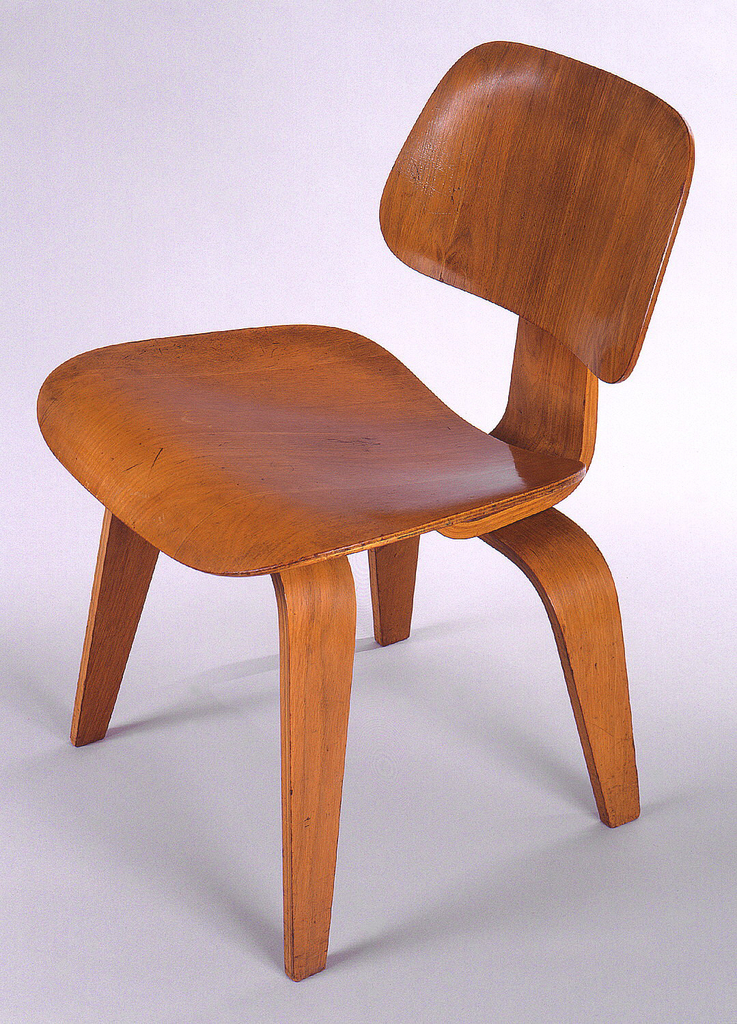Sculptural, ergonomic and light weight ––the DCW (Dining Chair Wood) along with the other molded plywood furniture designed by Charles and Ray Eames––was revolutionary in its material, form and manufacturing method. While still at the Cranbrook Academy in Michigan, described as the “cradle of American modernism,” Charles Eames and Eero Saarinen initially collaborated on the design of a contoured molded wood veneer and upholstered chair. Though unable to find a way to mass produce the design, it was a first and necessary step in their experimentation process. With World War II still on in 1942, the newly married Charles and Ray Eames, now living in Venice, California, further developed the material designing an eloquent leg splint for the U.S. navy, made of laminated and bent birch plywood, its contours form-fitting the back of an injured leg.
After the war's end, labor and materials were again readily available for mass manufacture, heralding a new and modern era for simpler functional furniture for the masses in post-war America. Using the industrial technologies developed during the war the Eames designed a simple system to mass produce and assemble separate components made from a sandwich of thin wood sheets bound with glue compressed to form five-ply chair backs, seats, legs and spine. Shock mounts and screws joined the laminated pieces and provided additional and welcome flexibility. The earliest versions of the DCW were produced in California by the Molded Plywood Division of Evans Products. Herman Miller Furniture Company took over marketing, distribution and eventually manufacture creating an entire line of products incorporating metal legs and matching coffee and dining tables.
Not satisfied with this extraordinary manufacturing and design innovation the Eames continued, creating collections from molded plastics, cast aluminum, metal and wood, and designed in a multitude of mediums. Masters of the material world they were also important cultural ambassadors, serving on the National Committee for the Arts and advised the National Endowment for the Arts.
